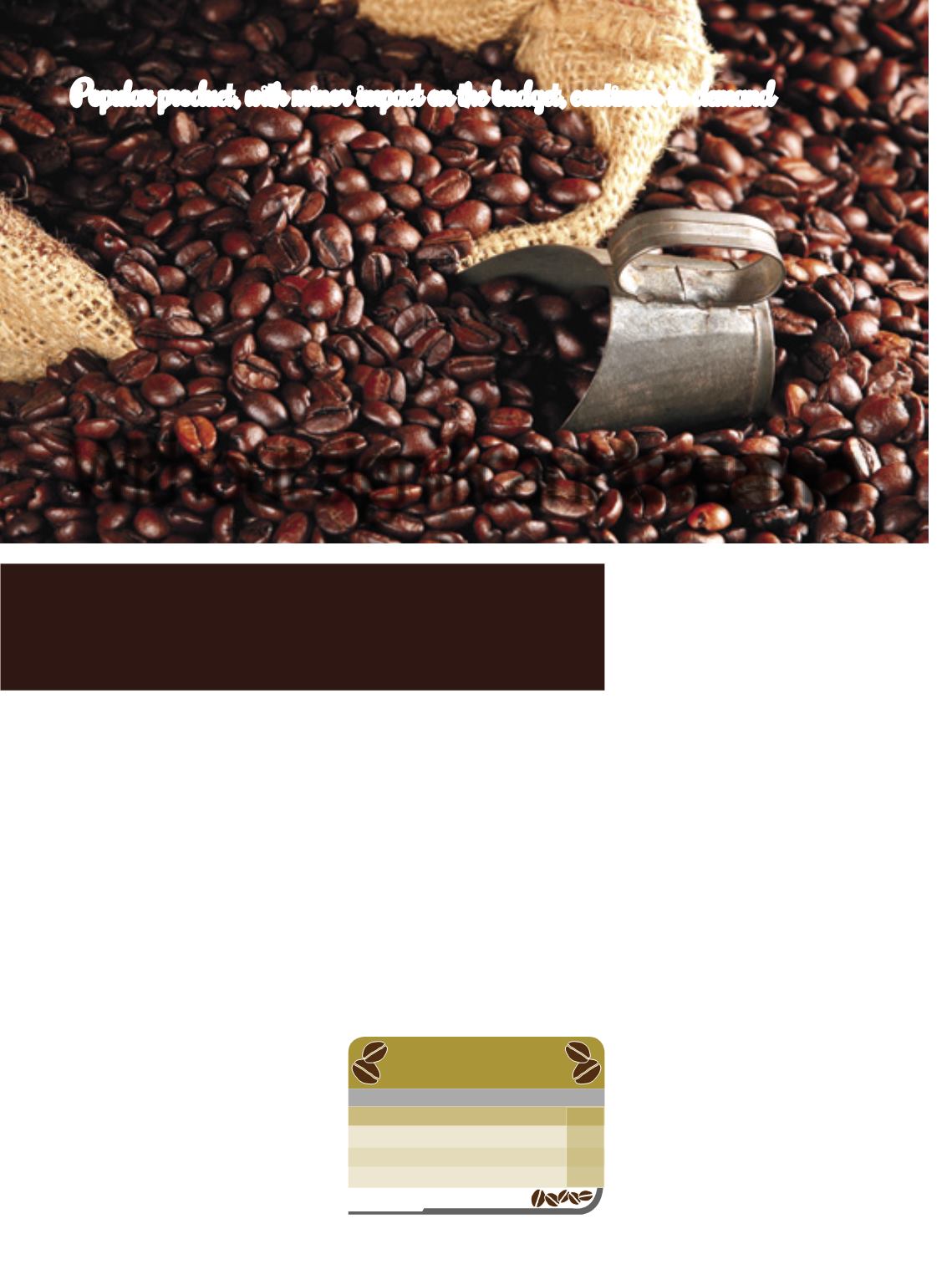
O
ur everyday coffee pre-
serves tradition and reveals
a performance that, year af-
ter year, attests to soaring
consumption by the Bra-
zilian population. In 2016, in spite of a
complicated economic scenario, demand
went so far as to outstrip the initial fore-
cast, of 21 million sacks, and was up 3.5%
from the previous period. According to
Nathan Herszkowicz, executive director
at the Brazilian Coffee Industry Associa-
tion (Abic), has it that because it is a pop-
ular beverage, present in people’s every-
day life, and still cheap at consumer level,
and does not weigh heavily on the budget.
Brazil, the leading global coffee produc-
er, comes second in consumption, right af-
ter theUnitedStates. Anyway, there is a con-
sistent domestic market for the beverage,
says the official. He mentions the survey
by Euromonitor, which reveals that 89% of
over 60-year old consumers have coffee ev-
eryday, while among young people, for the
Domesticcoffeeconsumptionsimplyignored
theunfavorableeconomicscenarioand
continuedontherisein2016,evensurmounting
theinitialexpectationsofthesector
sumers seeking more affordable brands
was also a fact ascertained by the survey:
“but they did not relinquish their habit and
started to make a comeback to the seg-
ment of premiumcoffees”.
Analyst Jefferson Carvalho, from Rabo-
bank, in turn, in opinions expressed in the
events of the sector, refers to consump-
tion increases of 1.3% a year in the Coun-
try, lower than in past years. Nevertheless,
he cites a positive factor for the segment.
The older population continues to grow,
and during old age people tend to con-
sume more coffee, thus more options for
consumers are necessary, considering the
segmentation of the product as a route to
follow, as a manner to boost its value, and
coffee as a specialty and not a commodity.
In 2017, notwithstanding the favorable
result in 2016, the Brazilian coffee industry
spotted some difficulties in the consump-
tion rhythm early in the year. Anyway, there
was hope for a reaction in parallel with the
materialization of the expectation of the
economic resumption with results in line
with the previous year. What also was at
stake was the supply of rawmaterial, which
had been a problem in 2016, with the fail-
ure of the conilon crop, and came as an un-
known perspective for the new period, in
light of smaller ending stocks.
n
ageperiod16 to20, daily frequency reaches
49%. Still according to the projections of the
institute,domesticconsumptionisboundto
grow3.2%ayear until 2020, onaverage, tak-
ing into consideration all types of coffee.
The survey shows that upwards of 80%
of the surveyed Brazilian households con-
sume coffee, and soluble coffee repre-
sents 81% of the total volume, but coffee
capsules are on a rising trend. Outside the
home, quality coffee is in great demand,
a sector that has been adversely affected
by the economic downturn. In general, in
2016, nonetheless, as observed by Abic of-
ficials, consumptionwas not affected. Con-
Withoutsignificant
trauma
Popular product, with minor impact on the budget, continues in demand
Sílvio Ávila
36
XÍCARA ALÇADA
cup after cup
Consumo de café no Brasil
Ano
2015 2016
Total(milhõesdesacas)
20,5 21,2
Percapita
verde(kg/hab/a)
6,12 6,29
Percapita
torrado(kg/hab/a) 4,90 5,03
Fonte:
Abic.


